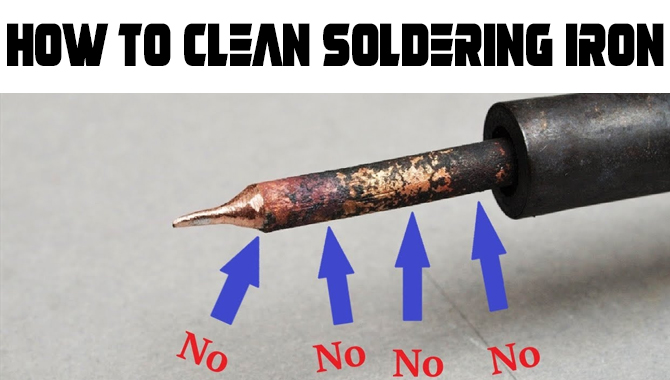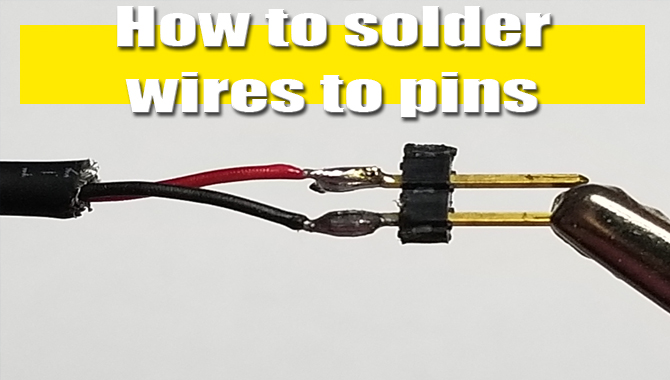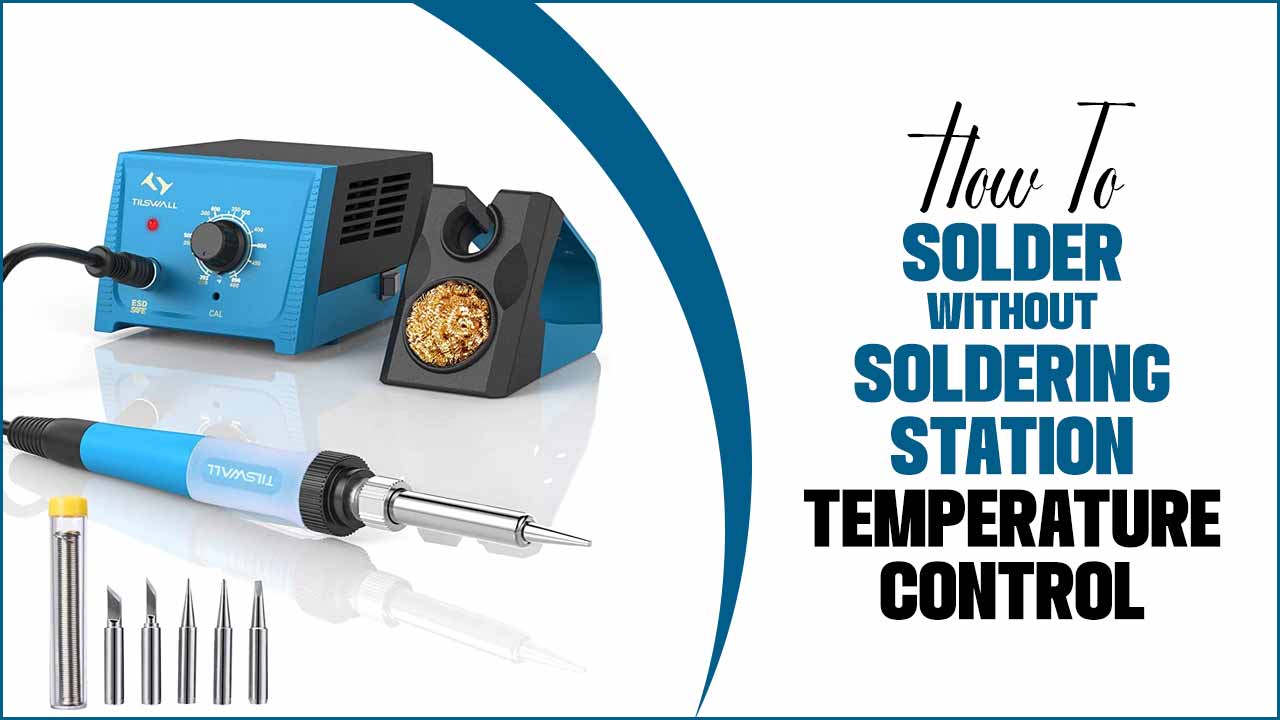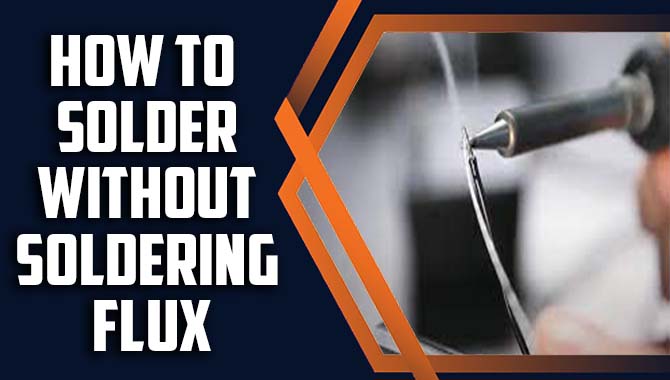Whenever we discuss new soldering iron users, we hear in common that they don’t get better performance and good longevity and melting times, even if they are using the best soldering iron on the market.
We found, in most cases, they don’t take care of their soldering iron and don’t focus on cleaning it. That’s why today, we will help you to learn how to clean soldering iron.
We accept that cleaning a soldering iron is quite challenging initially, and that’s why so many soldering iron users avoid it. It is the only reason why they don’t get the best result they are looking for.
Without further ado, let’s get started!

What Is Soldering Iron?
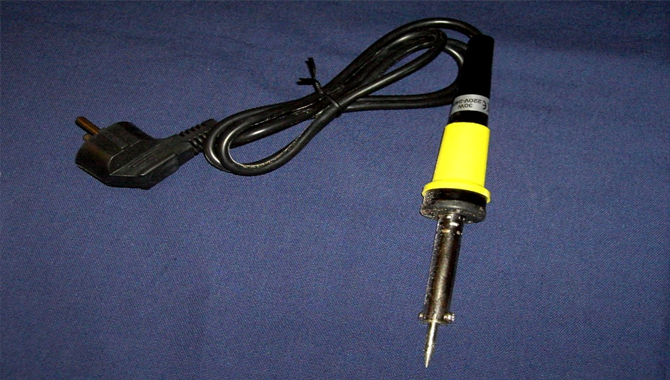
The soldering iron is a handy physical tool that heats the solder, and it’s primarily used for melting metallic alloys and for welding.
400;”>Soldering iron gives heat energy which passes from the metal head of the iron to the component you are working on. To get the best experience, you should clean the oxides regularly.
Why Should You Clean Your Soldering Iron?

Like iron, the metal tip of the soldering iron is hot, and that’s why they experience corrosion which is very harmful to the soldering iron.
Then again, a soldering iron also goes through both hot and cooler situations, and that’s why the soldering iron requires some maintenance.
That’s why, every time you use the soldering iron, it has to be clean; otherwise, you won’t be able to get the best soldering job you want. That’s why the soldering iron must be very clean and shining.
We recommend you use a wet sponge or brush and clean it before start using the soldering iron.
Things You Should Use To Clean Your Soldering Iron

Before getting into the things, we would advise you to get the best and suitable products. Make sure if the items can fight both carbon and oxides.
After using the products, be careful about removing them carefully; otherwise, it will make your soldering iron dull.
So, here is the list of things that you need for cleaning your soldering iron-
- Solder-removing sponges
- Sewing needle: for soldering iron tip made of copper
- Files
- Metal brushes
- Steel wool
- Solder erasers
- 600 grit sandpaper
- Tip cleaner (As it’s pretty expensive, we only recommend you to use it if you have a high-end and costly soldering iron)
So, these are the items you need if you want to clean your soldering iron by following multiple ways.
How To Clean Soldering Iron: Step-By-Step
In this section, we will see all the valuable tips and step-by-step guidelines that you need to know on how you can clean soldering iron. So let’s get started:
Cold And Dirty Iron
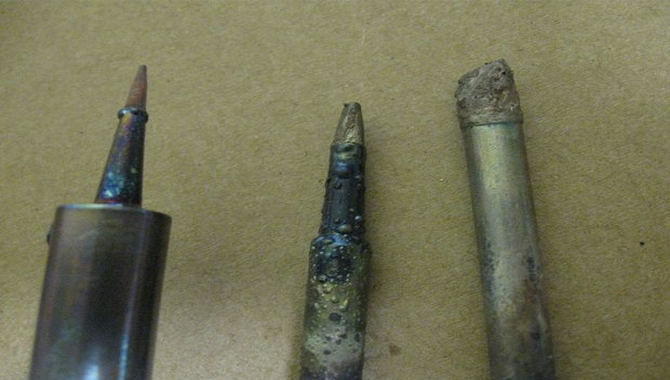
In this situation, the iron doesn’t perform according to your expectation. So, here is the procedure:
- Make sure the iron is cold, and if it’s hot, plug off, wait for 15-20 minutes and allow it to be cold again.
- Once it’s cold, rub the iron tip with our recommended sandpaper until it starts shining. Once the oxidation is gone, stop rubbing.
So, this is what you should do if it’s cold and dirty.
Hot And Dirty

In this case, you have to keep your soldering iron on the stand or side and allow it to get some heat (up to 90 seconds).
Once it got heated, you’ll see some brownish object on the tip of the tip, known as rosin or Greek pitch.
Now, get your wet sponge and set it in a place (not in your hand) and dip the tip on the damp sponge.
Dirty Surface And Stains
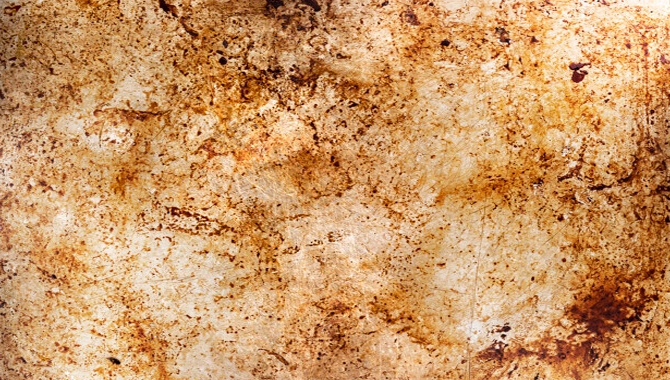
To clean dirty surfaces and stains from the iron tip, we highly recommend using a steel wool ball.
The steel wool is made with alloys that don’t react quickly on the soldering iron. In this case, you have to damp down the steel wool and rub the metal tip of the soldering iron, and as a result, it will remove the rust and stains.
Last but not least, tinning your iron.
Tinning The Soldering Iron

Once you have cleaned the soldering iron, now it’s time to tin the tip. By tinning, you’ll protect the iron from rust, but for that, you have to use a slim coating of solder to cover the tip of the iron.
Tinning the tip is essential; otherwise, the chemicals will pop up, but after tinning, the possibility of chemical tinning will be much lesser.
For safety, please wear safety goggles which will protect your eyes and sensitive skin.
Now, how to tin the iron? Well, the process isn’t that tough. Here is how you can tin the iron tip.
- Apply some solder to the iron tip. At first, start with a thin layer on the top of the tip.
- Try to apply it smoothly.
- Once it’s done and it’s cold, you can apply a few alloy cleaners and set it with a microfiber cloth.
Through tinning and using alloy cleaner, you will make your soldering iron safe from the risk of dust buildup and oxidation. We recommend tinning your soldering iron after every time usage.
Some Helpful Maintenance And The Caring Tip Of Soldering Iron
For better performance, there is no alternative to maintaining your soldering iron. So, here are some following tips:
1. Using High-Quality Solder:
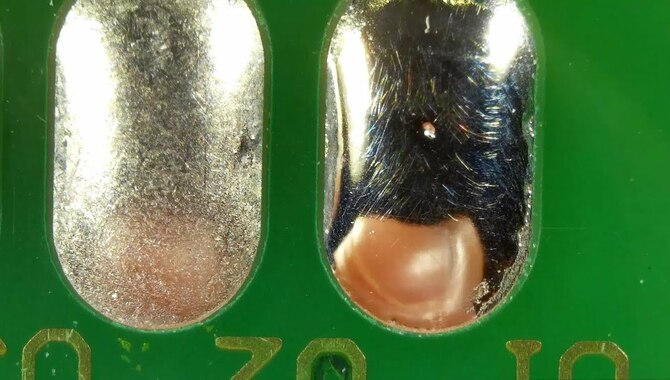
Cheap quality solder damages the soldering iron, and using it will help the iron to get dirtier quickly and won’t heat that much.
2. Cleaning The Remaining Debris After Usage:
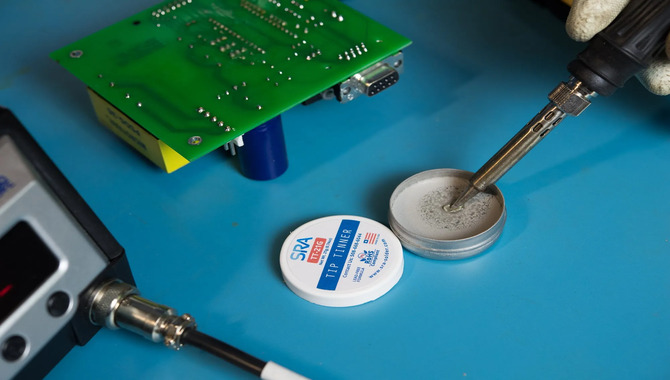
Once you have turned on the iron and it’s cold. Now, this is the high-time to clean it properly. Clean the debris. Because of the remaining debris, the soldering iron loses its efficiency.
3. Check The Cords Of The Soldering Iron.
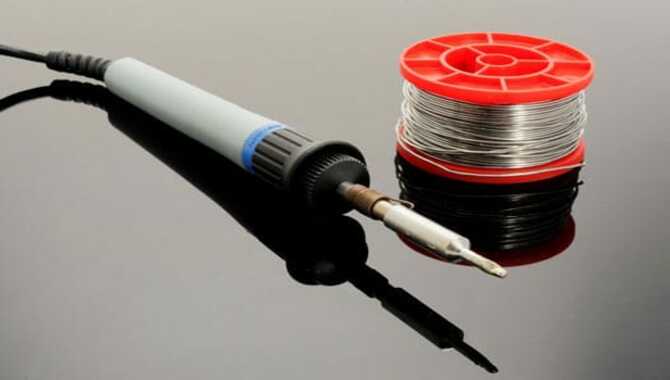
As soldering iron produces high heat, sometimes the iron’s cord gets damaged, which is harmful and dangerous for both of you and your soldering iron. If you see anything wrong with the cable, seek help from an expert or an electrician.
4. Wiping The Iron
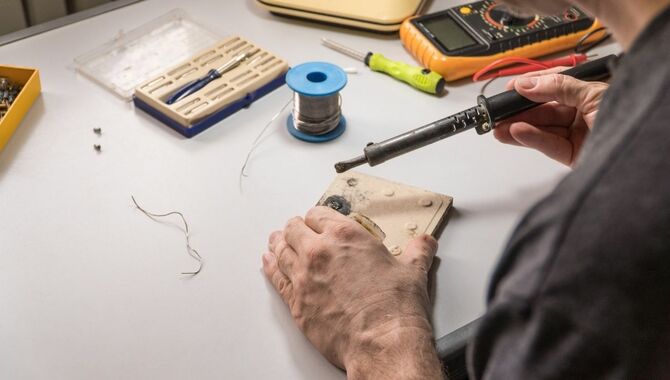
Suppose you don’t have time for proper cleaning, wipe the iron and its iron tip. Please don’t forget to follow the cleaning procedure; otherwise, you may hurt yourself and damage your iron.
Conclusion
Now, you know how to clean soldering iron. See, cleaning a soldering iron isn’t a difficult task; you just have to learn it and practice it, and with time, it will be easier for you.
For your safety, please don’t forget to wear safety gear and clean your soldering iron after each time of usage and enjoy a highly efficient soldering iron for the rest of your life.

